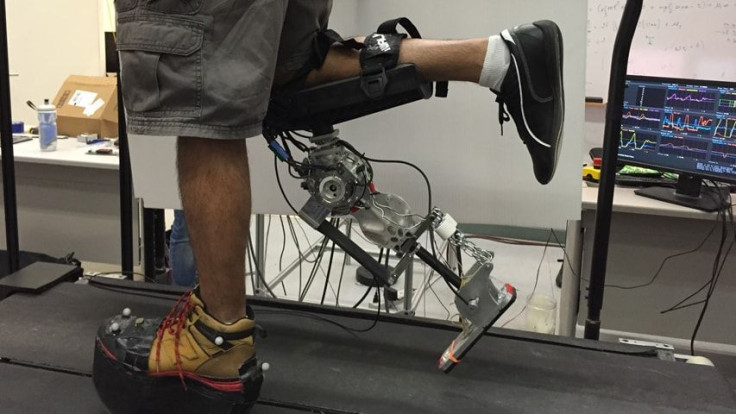New Robotic Prosthetic Leg Recreates Our Natural Walking Motion, Even When It Loses Balance Or Gets Tripped

Prosthetic legs are getting more lifelike, but they are still missing a crucial human element: the ability to balance. That’s why researchers at Carnegie Mellon University are developing a robotic prosthetic leg that lets wearers balance in the same natural way a human is able to.
Hartmut Geyer, assistant professor of robotics at the university, have been studying how human reflexes and other neuromuscular systems that allow us to balance work without us thinking about them. With this research, he has his team have created a robotic prosthetic leg that has proven capable of maintaining a stable walking gait in simulations and lab tests. They evendisplay more human-like recovery when the user stumbles or trips.
“Powered prostheses can help compensate for missing leg muscles, but if amputees are afraid of falling down, they won’t use them,” Geyer said. “Today’s prosthetics try to mimic natural leg motion, yet they can’t respond like a healthy human leg would to trips, stumbles, and pushes. Our work is motivated by the idea that if we understand how humans control their limbs, we can use those principles to control robotic limbs.”
In humans, our quadricep and hamstring muscles — which help straighten or bend joints — automatically react and adjust to the force feedback from unstable ground by either slowing a step or extending the leg more to accommodate for the next step. To put this into practice, Geyer and his team created a neuromuscular model — called the Robotic Neuromuscular Leg 2 — which mimics a human leg with the help of computer simulations. The device is about half the size of an actual human leg.
The researchers found that by recreating a neuromuscular control system, they were able to mimic a natural, human-like walking pace. The system is also able to correctly change the motion of the leg swing, both at the end of the swing and in the beginning, allowing users to regain their balance even if the leg swing has been disturbed. The one problem with the system, Geyer said, is that it was still having trouble course correcting in the middle of a leg swing.
A person using a robotic prosthetic leg will in theory not be as burdened by the missing weight as a person with a static prosthesis, since the power of the leg can compensate for any missing muscles. The motors within the prosthetic allow for adjustment of both the knee and ankle while walking, letting the user regain their natural gait.
Below-the-knee amputations are the most common amputations in the United States, with more than two million Americans living with limb loss. It is also projected the amputee population will double by 2050, so this leg can help those with amputations regain and maintain their mobility.



























